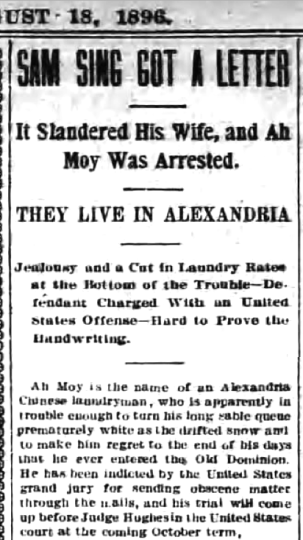“Dr. Gee Wo Chan made a name for himself as a proprietor of Chinese herbal medicine. Described as one of the most influential Chinese-Americans of his time, Chan was one of three Chinese-American businessmen who sponsored the Chinese Village exhibit at the 1893 Chicago World’s Fair, the Columbian Exposition, with an investment of $90,000.
Excerpt From: David Dodson. “Chinese Medicine in Post-Frontier America: A Tale of Three Chinese-American Doctors.”
Dr. Chan then opened storefront clinics in Chicago, Milwaukee, and Omaha. Clever advertisements in English for the C. Gee Wo Chinese Medicine Co. in the Milwaukee Journal daily from 1894 through 1897 clearly aimed at selling Chinese medicine to European-Americans. Nearly identical as ran in the Omaha Bee newspaper simultaneously for a storefront of the same name in Omaha.
He placed large ads in newspapers such as this one in Omaha in 1891.
How could a single doctor run a practice in three separate cities at the same time? It turned out that in Milwaukee and Omaha, men impersonating Dr. Gee Wo Chan were arrested for practicing medicine without a license.
One such arrest in Omaha was described in the Chicago Daily Tribune in 1899:
The . . . Board of Health today . . . secured the arrest of the manager of Dr. Wo’s medical parlors. It is claimed that Dr. Gee Wo Chan is practicing his profession in Chicago, and that his Omaha office is being conducted by another Celestial, who assumes the name of his principal. . . . The[…]”
“he expanded to multiple cities, developing a chain of clinics using his name and image. To accomplish this, he hired other Chinese herbalists to stand in for him. His denial notwithstanding, this was possibly an intentional strategy for circumventing anxieties and negative beliefs about the Chinese in a violently anti-Chinese place and time; the customer was assured they would be personally seen and treated by the familiar and trustworthy Dr. Chan himself."
Chan was charged with practicing medicine without a license in Nebraska. He fought the charge and the case was seen by the Supreme Court of Nebraska on Feb. 15, 1893. Nebraska had just passed a law in 1891 restricting who can practice medicine.
Similar laws passed in other states with the requirement of being a citizen in order to practice medicine. Training in traditional Chinese medicine and herbalism was nowhere recognized as a medical degree. Dr. Chan lost his case and the State Supreme Court upheld the recent law, and yet, his Chinese medicine business continued to thrive.”
“The Chinese Exclusion Act file contains a single transcript, one page in length, of an interview with a “witness” Gee Way Chan, dated 9/8/1905. [7] Gee Way Chan was the acting manager for the Gee Wo Chan Chinese Medicine, Co., at 427 Wabash Ave., Chicago, Ill.
At this time, Dr. Chan himself was visiting China. The purpose of the interview was to establish that Dr. Chan was still a merchant—a requirement for him to return to the country under the Chinese Exclusion Act. The interview establishes that Dr. Chan still maintained a $5,000 interest in the company.
By 1924, Chan moved to Portland, Oregon, where he opened a Chinese medicine company.

















